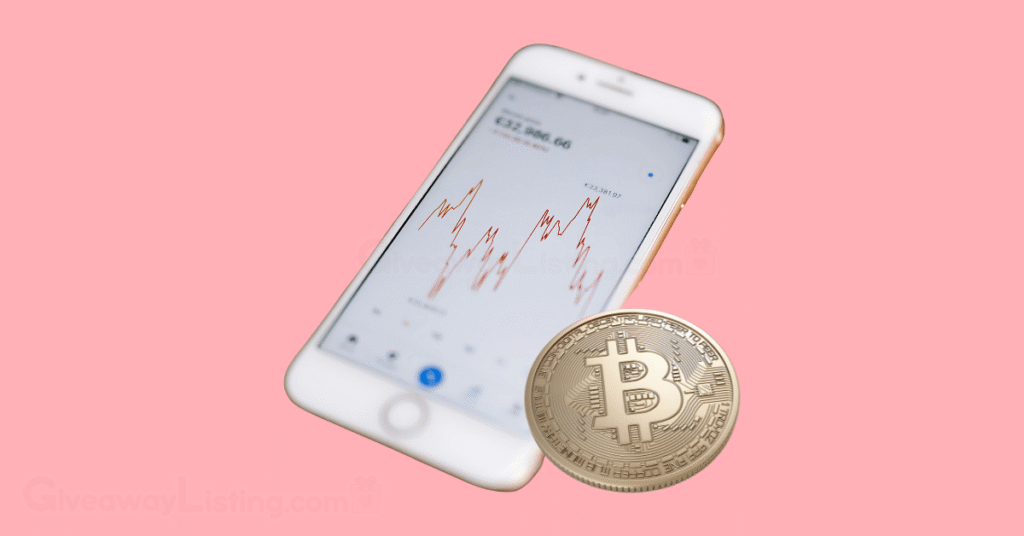BTC Price History Until Today
Bitcoin is the original cryptocurrency, a decentralized digital currency created in 2009 by the pseudonymous entity known as Satoshi Nakamoto. It operates on a peer-to-peer network, allowing users to transact directly without needing a bank or central authority. All transactions are recorded on a public ledger called the blockchain.
Since its launch, Bitcoin’s price journey has been nothing short of a wild ride. Initially, it had no real-world value. The first recorded price was in 2010 when two pizzas were famously purchased for 10,000 BTC. From there, its value saw incredible peaks and deep troughs. The first major spike occurred in 2013, when the price surged from around $13 to over $1,100. However, the most talked-about bull run was in 2017, when it surged to nearly $20,000, bringing Bitcoin into the mainstream spotlight.
After the 2017 peak, Bitcoin entered a prolonged bear market, with its price falling significantly in 2018. The following years showed periods of recovery and consolidation. The COVID-19 pandemic in 2020 seemed to fuel another massive rally, with institutional investors entering the market and pushing the price past its previous all-time high to close the year near $29,000.
This momentum continued into 2021, when Bitcoin reached a staggering peak of over $69,000. The years 2022 and 2023 were marked by a significant downturn, followed by a steady recovery. The start of 2024 brought renewed excitement with the approval of Bitcoin ETFs in the U.S., leading to another record-breaking run in 2025, during which the price reached $120,000.
BTC Price Historical Data From 2009 to 2025
The price of Bitcoin has experienced dramatic swings throughout its history. These movements are influenced by a combination of regulatory news, technological advancements, investor sentiment, and broader economic factors. The asset’s volatility has been a defining characteristic, offering both high risk and high reward to traders.
The table below shows the highest and lowest prices of Bitcoin from 2009 to 2025.
| Year | Highest Price (USD) | Lowest Price (USD) |
|---|---|---|
| 2009 | $0 | $0 |
| 2010 | $0.39 | $0.01 |
| 2011 | $29.60 | $0.29 |
| 2012 | $13.45 | $4.34 |
| 2013 | $1,151.08 | $13.28 |
| 2014 | $951.39 | $314.16 |
| 2015 | $462.67 | $176.69 |
| 2016 | $971.97 | $368.17 |
| 2017 | $19,188.00 | $777.76 |
| 2018 | $17,135.84 | $3,236.76 |
| 2019 | $13,016.97 | $3,440.52 |
| 2020 | $29,001.72 | $4,970.79 |
| 2021 | $69,000.00 | $29,294.62 |
| 2022 | $47,686.81 | $15,787.28 |
| 2023 | $44,166.60 | $16,625.08 |
| 2024 | $103,900.47 | $39,507.37 |
| 2025 | $120,091.61 | $76,642.00 |
If you are new to the cryptocurrency world, you can learn more about the foundation of Bitcoin here.
Latest Bitcoin Price Prediction for December 2025

Bitcoin’s price is notoriously volatile, influenced by a dynamic blend of market forces. Its value can change quickly based on a variety of catalysts.
Some of the key factors that can affect the price of Bitcoin include:
- Supply and Demand: With a capped supply of 21 million coins, scarcity can drive up the price as demand increases.
- Institutional Adoption: Growing interest and investment from large companies and financial institutions can boost its credibility and value.
- Regulatory News: Government regulations and policies around the world can either support or hinder Bitcoin’s price.
- Market Sentiment: Media coverage, public perception, and the general mood of investors play a significant role.
- Technological Developments: Updates to the Bitcoin network or the emergence of competing cryptocurrencies can influence its standing.
- Macroeconomic Factors: Global economic conditions, such as inflation rates and monetary policies, can impact Bitcoin as an alternative asset.
Below are some price predictions of bitcoin for December 2025
| Source | Predicted Price for December 2025 (USD) |
|---|---|
| Changelly | Average: $122,537.09 |
| CoinCodex | Average: $129,037 |
| Binance User Consensus | $119,188.71 |
| CoinDCX | $125,000 – $128,000 |
Best 5 BTC Price Predictions in 2025

Figuring out Bitcoin’s future price is akin to predicting the weather in a notoriously fickle climate—experts have their models and data, but a surprise storm can still emerge. For 2025, the prevailing sentiment is optimistic, largely driven by a few key developments. The launch of spot Bitcoin ETFs has opened the floodgates for institutional investment, providing big-time investors with a straightforward way to get in on the action.
A more crypto-friendly political atmosphere in the U.S. is also adding to the positive sentiment. When governments begin to view crypto as an asset to be managed rather than shut down, it builds confidence across the market. Still, predictions are all over the map. Some analysts are predicting a steady climb, while others anticipate a wild, parabolic surge. It’s essential to remember that these forecasts are educated guesses based on current trends and historical data, rather than guarantees. The crypto market is known for its volatility, and what goes up can come down just as fast.
Here are some of the top 5 predictions for 2025:
- One of the most bullish forecasts comes from Standard Chartered, which has set a potential price target of $250,000 on Bitcoin for 2025. Their reasoning is based on a comparison to gold. They point out that after gold exchange-traded products (ETPs) were introduced, the price of gold shot up significantly over the next several years. The thinking is that Bitcoin ETFs will have a similar, if not more dramatic, effect. With massive inflows into these new financial products, the demand for the limited supply of Bitcoin could send its price soaring.
- Cathie Wood of ARK Invest is well-known for her optimistic views on disruptive technologies, and Bitcoin is no exception. While her firm’s long-term models see Bitcoin hitting an incredible $1.5 million by 2030, their outlook for 2025 is also quite strong. Projections based on their analysis indicate that the $200,000 mark is a feasible target. This forecast is heavily dependent on the assumption that institutional investors will allocate a small but significant portion of their portfolios to Bitcoin. This trend is already underway thanks to the new ETFs.
- A more moderate but still very positive prediction places Bitcoin in the $150,000 to $180,000 range. This forecast is often supported by stock-to-flow models, which track the scarcity of an asset against its production. With the supply of new Bitcoin being so low after the halving, this model suggests a significant price increase is likely. This target also accounts for continued, steady inflows from ETFs and retail investors, along with favorable macroeconomic conditions, such as potential interest rate cuts from the Federal Reserve, which could make alternative assets like Bitcoin more attractive.
- Examining the charts, some technical analysts have identified a price target of approximately $175,000 for 2025. This prediction is based on historical cycle patterns, which have shown that Bitcoin tends to reach a new peak roughly 12 to 18 months after a halving event. By mapping out previous cycles, analysts have identified this level as a potential top for the current bull run. However, this path is unlikely to be a straight line and may require significant corrections along the way.
- To provide a more balanced view, it’s worth noting the more cautious predictions. Some market watchers, like Robert Kiyosaki, have pointed to the possibility of a sharp correction before the next major leg up.
Is Bitcoin a Good Investment?

Investing in Bitcoin is a different beast compared to buying stocks or bonds. You’re not buying a piece of a company but rather a piece of a decentralized digital network. Bitcoin’s value comes from its scarcity—only 21 million will ever exist—and its growing acceptance as “digital gold,” a store of value that operates outside the control of any government or bank. This independence is a big part of its appeal, especially during times of economic uncertainty and inflation.
The introduction of spot Bitcoin ETFs has been a game-changer, making it much easier for everyday investors to get exposure to Bitcoin through their regular brokerage accounts. Before, buying Bitcoin involved navigating crypto-specific exchanges, which could be a hurdle for some. Now, the process is more familiar and accessible, which has brought a new wave of capital into the market. This blend of technological innovation and increasing financial integration makes Bitcoin a unique and compelling asset class.
Investing in Bitcoin comes with a unique set of pros and cons. On the one hand, its potential for high returns is what draws most people in. Historically, it has outperformed many traditional assets, and its decentralized nature makes it resistant to government censorship and inflation. The fixed supply also means it can’t be devalued by a central authority printing more money. On the other hand, the risks are substantial. The price is famously volatile, with drops of 50% or more not being uncommon. This means you need a strong stomach to handle the ups and downs without panic selling.
Regulatory risk is another major factor. While the climate in the U.S. is currently improving, new laws or a change in government attitude could negatively impact the market. Security is also a big responsibility. While the Bitcoin network itself is highly secure, individual investors are ultimately responsible for safeguarding their coins. If your holdings are stolen from an exchange or you lose the keys to your personal wallet, they may be lost forever. It’s a high-stakes game where personal responsibility is key.
So, why might Bitcoin be a good investment despite the risks? For many, it’s about playing the long game. They see it as a revolutionary technology that is still in its early stages, with the potential to reshape finance. It can also be an excellent addition to a well-rounded investment portfolio. Because its price doesn’t always move in sync with the stock market, it can provide a hedge during downturns in traditional markets.
The key is to approach it with the right mindset. A common rule of thumb is only to invest an amount you are entirely willing to lose. This way, you can participate in the potential upside without putting your financial well-being on the line.
For those ready to get started, here are the basic steps to invest in Bitcoin:
- Choose a Platform: Select a reputable cryptocurrency exchange or a traditional broker that offers crypto.
- Create and Verify Your Account: You’ll need to provide personal information and proof of identity to comply with regulations.
- Fund Your Account: Connect a payment method, such as a bank account or debit card, to deposit funds.
- Place Your Order: Decide how much Bitcoin you want to buy and place either a market order (buy at the current price) or a limit order (buy at a specific price).
- Secure Your Bitcoin: Decide whether to keep your Bitcoin on the exchange or move it to a personal hardware or software wallet for better security.
How to Buy Bitcoin?
The most popular method for purchasing Bitcoin is through a cryptocurrency exchange. These platforms are built specifically for trading digital assets and offer a wide range of features. The process typically involves signing up, completing an identity verification (KYC) process, depositing money via bank transfer or card, and then placing an order to buy BTC.
When you’re ready to start, selecting the best crypto exchange is a good first step. Other options include traditional stockbrokers that have begun offering crypto, peer-to-peer apps like PayPal or Cash App, and even physical Bitcoin ATMs, though the latter often come with higher fees.
How to Sell Bitcoin?
Selling Bitcoin is the reverse of the buying process. The most common method is to use a cryptocurrency exchange. You would send your Bitcoin from your wallet to the exchange, place a sell order for your desired fiat currency, such as USD or EUR, and once the sale is complete, you can withdraw the money to your linked bank account.
Similar to buying, you can also use P2P platforms to sell directly to another person or use a Bitcoin ATM to get cash in hand, though you should always be mindful of the fees and exchange rates involved.
Bitcoin Forecast After 2025

Bitcoin’s price history is a tale of dramatic rises and sharp declines. A look back over the last five years puts its recent performance into perspective. In mid-2020, you could snag a Bitcoin for around $10,000. Fast forward to today, and the price is hovering well over the $100,000 mark. That’s a more than tenfold increase, which is a clear illustration of its explosive growth, even with all the gut-wrenching volatility in between.
For 2026, the outlook remains broadly positive, with many analysts expecting the momentum from 2025 to carry over. Predictions generally indicate that Bitcoin will push past the $200,000 level. This is based on the continued effects of the 2024 halving, which historically leads to a bull market peak 12-18 months later.
Continued institutional adoption through ETFs and clearer regulatory frameworks are also expected to fuel the growth. However, some more conservative models suggest a potential cooling-off period or a correction, with prices ranging from $125,000 to a high of around $248,000.
Looking ahead to 2027, the predictions begin to diverge, illustrating just how challenging it is to forecast this market long-term. The bullish case sees Bitcoin solidifying its role as “digital gold” and pushing towards the $300,000 to $360,000 range. This would be driven by deeper integration into the global financial system and a growing number of corporate and even national treasuries holding Bitcoin. On the other hand, some models suggest a less exciting year, with prices potentially dipping back, highlighting the cyclical nature of the market.
The year 2028 is a significant milestone on the calendar, as it marks the next Bitcoin halving event. Historically, halvings have been significant catalysts for bull runs. Anticipation for this supply shock is expected to build throughout the year, with some of the most optimistic forecasts suggesting Bitcoin could finally touch the $1 million mark. Predictions are wide, ranging from a more modest $137,000 to highs well over $500,000, but the halving is the key event everyone will be watching.
By 2029, if the bullish scenarios materialize, Bitcoin is likely to be in a full-blown bull market, riding the wave of the 2028 halving. Projections for this year often indicate that the price will solidify its position well above previous all-time highs. Forecasts suggest a potential range from around $600,000 to over $760,000. This continued growth would depend on Bitcoin maintaining its dominance and utility in the face of a constantly changing crypto landscape.
Entering 2030, we see some of the most ambitious price targets. ARK Invest, for instance, has a long-standing prediction that Bitcoin could reach $1.5 million by 2030. Other forecasts range from just under $1 million to over $3.5 million. These long-range predictions are based on the idea that Bitcoin will capture a significant portion of the global store of value market, rivaling gold. Mainstream adoption for transactions and stabilized global regulatory frameworks would be key drivers for reaching such heights.
Trading Strategies For Bitcoin

Given Bitcoin’s infamous volatility, just jumping into the market without a plan is a recipe for a headache. A well-thought-out trading strategy is your best friend for managing risk and capitalizing on profitable moves.
Whether you’re in it for the long haul or looking for quick gains, here are the fundamental strategies you should follow:
1. Day Trading
Day trading is the high-octane, fast-paced approach to the market. The goal here is to make a profit from small price movements by opening and closing multiple positions within the same day. Day traders rely heavily on charts, utilizing technical analysis tools such as the Relative Strength Index (RSI) and Moving Average Convergence Divergence (MACD) to identify short-term trading opportunities. It’s a game of inches, where the goal is to accumulate small wins that add up to a decent profit over time.
This strategy is not for the faint of heart. It requires constant attention, a cool head, and a solid understanding of market mechanics. You need to be disciplined enough to stick to your plan, especially when it comes to setting stop-losses to cut your losses quickly if a trade goes against you.
2. Swing Trading
If day trading sounds too intense, swing trading might be a better fit for you. This strategy involves holding positions for more than a day but usually less than a month, aiming to profit from the larger “swings” in price. It’s a middle-ground approach that combines elements of both short-term and long-term trading, making it popular among many crypto traders.
Swing traders often rely on technical analysis to identify the start and end of market trends. They may use tools such as moving averages or chart patterns to determine the optimal entry and exit points. This method is less time-consuming than day trading, as you’re not glued to the screen all day, but it still requires regular market analysis and a good sense of when momentum is building or fading.
3. HODLing (Buy and Hold)
The HODL strategy is as simple as it gets: you buy Bitcoin and hold onto it for the long term, through all the ups and downs. The term originated from a typo in a 2013 forum post and has since become a mantra for long-term believers in Bitcoin’s potential. This isn’t really a trading strategy, but rather an investment philosophy rooted in the idea that Bitcoin’s value will appreciate significantly over time.
To be a successful HODLer, you need patience and the emotional strength to ride out severe market downturns without panic selling. A popular technique within this strategy is dollar-cost averaging (DCA), where you invest a fixed amount of money at regular intervals, regardless of the price. This approach helps to average out your purchase price over time, reducing the risk of buying in at a market top.
4. Scalping
Scalping is day trading on steroids. It’s an ultra-short-term strategy where traders aim to profit from small price fluctuations by executing a large number of trades in a single day. Positions are often held for just a few seconds or minutes at a time. The goal is to skim small profits off each trade, which can add up to a significant amount by the end of the day.
This is a high-risk, high-stress strategy that is generally recommended only for experienced traders. Scalpers often use high leverage to amplify their potential gains from small price movements, which also greatly increases their risk. A deep understanding of the order book, lightning-fast execution, and access to a trading platform with rock-bottom fees are all essential for successful scalping.
How to Learn More About Bitcoin?

Jumping into the world of Bitcoin can feel like trying to learn a new language and advanced economics simultaneously. With concepts like blockchain, private keys, and mining, it’s easy for newcomers to feel a bit lost. The good news is that there’s a wealth of information available designed to get you up to speed without requiring a computer science degree.
Here are a few top-notch resources to help you get a handle on the digital currency:
- Bitcoin.org: This is the original instruction manual. It’s one of the first websites about Bitcoin and offers a straightforward, no-frills introduction to the basics. The site is great for understanding the core principles of how Bitcoin works. Its method is to provide foundational, easy-to-read guides and resources directly from the source.
- Binance Academy & Coinbase Learn: These are the learning centers of two of the world’s biggest crypto exchanges. They are designed for absolute beginners, breaking down complex topics into bite-sized, easy-to-understand articles and videos. They often have a very user-friendly approach. Their method involves guided learning paths and simple explanations to build your knowledge from the ground up.
- Learn Me A Bitcoin: If you’re the type who likes to understand how things work under the hood, this website is for you. It offers a more technical but still accessible look into the mechanics of Bitcoin and its blockchain. Its method is a deep, technical exploration that explains the “why” behind the technology.
- Bitcoin for Beginners by CryptoPotato: This guide offers a comprehensive yet simple overview of everything a newcomer needs to know, from the history of Bitcoin to practical steps on how to buy and store it securely. It’s well-regarded for being thorough and easy to follow. Its method is to act as an all-in-one guide that covers both the theory and the practical application for new users.
To stay on top of the fast-moving market, keeping an eye on the latest Bitcoin news is always a smart move.
This guide has walked through the eventful history of Bitcoin’s price, from its humble beginnings to its recent record-breaking highs. We’ve examined expert forecasts for the near future, including detailed predictions for 2025 and longer-term outlooks extending to 2030, which reveal a wide range of potential outcomes.
We also discussed whether Bitcoin is a suitable investment for you, weighing its high potential for returns against its significant risks and volatility. The information provided in this content is up to date as of December 2025.
Bitcoin Price Prediction FAQs
Here are answers to some frequently asked questions about the Bitcoin prediction of 2025:
How High Can Bitcoin Go Realistically?
Many experts predict that Bitcoin will reach between $150,000 and $250,000 during the 2025 market cycle. Longer-term forecasts from firms like ARK Invest suggest a potential climb to over $1.5 million by 2030. These figures depend heavily on continued institutional investment and favorable global economic conditions.
Will Bitcoin Reach $10 Million?
Reaching $10 million per coin is a highly speculative, long-term target. This would require Bitcoin’s market cap to grow to over $200 trillion, capturing a massive portion of global wealth. While some industry figures believe it is possible, it remains a very optimistic outlook for the distant future.
Is it Safe to Invest in Bitcoin Today?
Bitcoin is a high-risk asset known for its extreme price fluctuations, with historical drops exceeding 80%. While the approval of spot ETFs has increased its legitimacy, its volatility remains a significant factor. The market’s Fear & Greed Index is currently at 71, suggesting high optimism but also potential for pullbacks.
What is the Highest Prediction for Bitcoin?
The most widely cited high-end forecast comes from ARK Invest, which projects Bitcoin could reach $1.5 million by 2030 in its bull case scenario. Some extreme predictions go as high as $5 million, but these are based on very optimistic assumptions about global adoption and economic shifts.
Who Owns the Most Bitcoin?
Bitcoin’s creator, Satoshi Nakamoto, is believed to hold the largest amount, estimated at around 1.1 million BTC. Public companies are also major holders, with MicroStrategy owning over 200,000 BTC. The U.S. government is another large holder, possessing more than 200,000 BTC from seizures.
Will Bitcoin Reach $1 Billion?
A price of $1 billion per Bitcoin is not considered a credible or realistic prediction. This valuation would place its market cap at $21 quadrillion, a figure that is many times larger than the total estimated wealth of the entire world. Such a price point is currently considered impossible.

